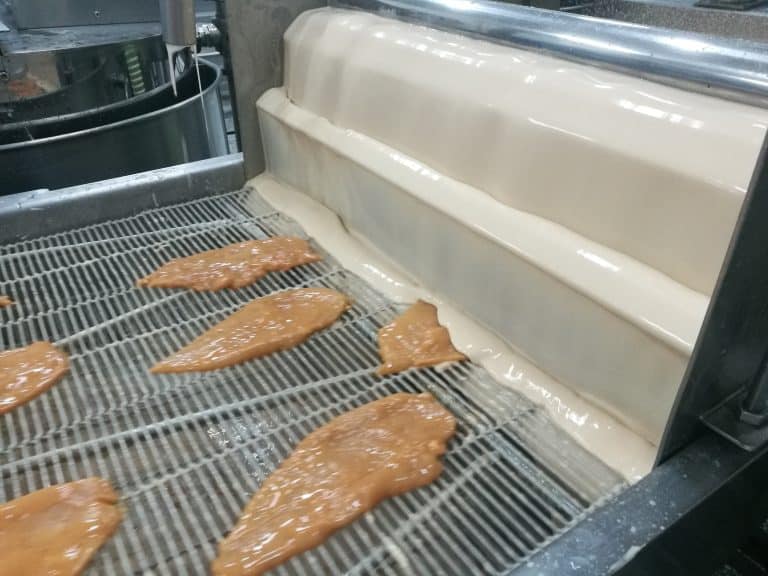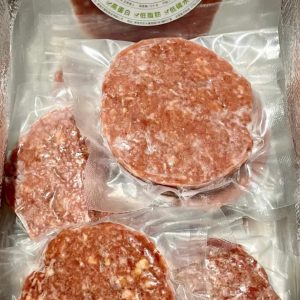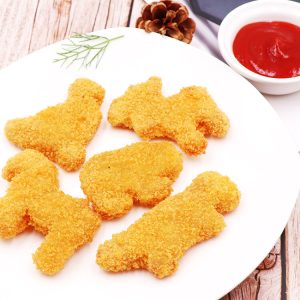The global market for coated foods has surged by 16% in recent decades, driven by demand for convenience and sensory appeal. Yet achieving consistent quality—crispness, adhesion, and flavor—requires more than great recipes. It demands precision-engineered machinery that addresses core processing challenges:
1. Viscosity Control: The Heart of Coating Success
- Batters must maintain optimal viscosity (40–60°F/4–15°C) to ensure uniform pickup and prevent settling.
- Solution: Integrated temperature-controlled mixing systems with high-shear paddles (e.g., Hobart N-50) and real-time monitoring (Zahn/Stein cups, Brabender Viscoamylograph) stabilize viscosity for 2+ hours.
2. Adhesion & Texture: Beyond Ingredients
- Substrate surfaces (e.g., poultry skin, vegetables) directly impact coating adhesion. Poor adhesion causes “shelling” (separation) and waste .
- Solution: Multi-stage applicators (predust → batter → breading) with adjustable conveyor speeds ensure complete coverage. Tempura batter units minimize shear stress to preserve leavening gas .
3. Frying Efficiency: Heat Transfer Mastery
- Temperature gradients in fryers cause uneven cooking. Cold spots (from overloaded in-feed) increase oil absorption by 15–20% .
- Solution: Forced-circulation fryers with below-surface oil return and rapid-recovery heating maintain ±2°F uniformity. Continuous filtration extends oil life by removing carbonized particles.
Future-Proofing for Industry Trends
As health and ethnic flavors reshape coatings, equipment must adapt:
- Low-Oil/Gluten-Free Batters: High-shear mixers incorporate gums (xanthan, cellulose) for viscosity without settling.
- Ethnic Flavors: Dusting systems apply seasonings post-breading to prevent “flash-off” during frying .
- Sustainability: Cryogenic freezers (-100°F/-73°C) reduce cracking vs. mechanical systems, preserving coating integrity
Ready to upgrade your coating line? [Contact us] for a machinery audit based on AACC International’s gold-standard research.



